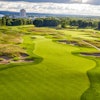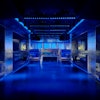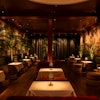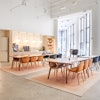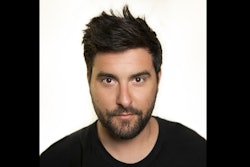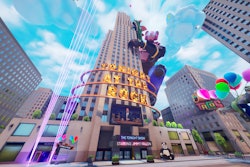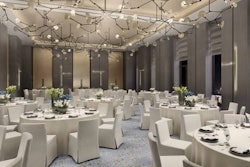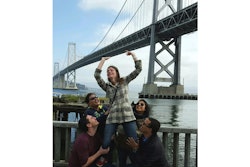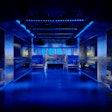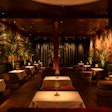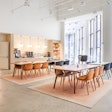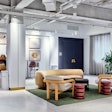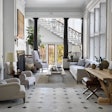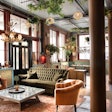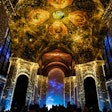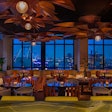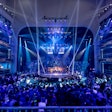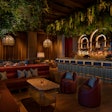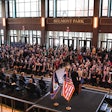The majority of New York music festivals, including Governors Ball and Electric Daisy Carnival, tend to attract younger crowds with high-profile headliners and common sponsor activations. Panorama—which was organized by AEG Live and Goldenvoice (the concert-promotion company behind Coachella)—took a different approach as an event that catered to people of all ages, and was as driven by technology and art as it was by music.
The inaugural festival, which took place July 22 to 24 at Randall's Island, enticed music fans with headlining acts including LCD Soundsystem, Kendrick Lamar, Sia, and Arcade Fire. But the event, which was also Goldenvoice's first New York festival, set itself apart from others by showcasing an array of technology-focused art experiences that attracted festivalgoers.
"New York City is the capital of music, art, and fashion, with technology as the common thread that binds them all together," says Goldenvoice festival producer Mark Shulman. "Tech now influences artists in not only how they create their art, but how it is distributed, discovered by fans, and then shared with friends. Panorama is a celebration where all of these disciplines come together."
For the festival's music aspect, performance stages had video projections on massive screens that were customized for each set, as well as two digitally enhanced domes where attendees could dance to tunes from a rotating set of DJs. But the technology focal point of the festival was the Lab. Presented by HP and the Verge and designed and curated by experiential design company Meta.is, the pop-up museum featured a variety of digital interactive art exhibits from 11 New York-based artists.
"From the start, our team at Goldenvoice was looking to create a festival for New York that would bring together the creative community, the business engine that drives it, and the fans to experience it," says Shulman. "The Lab is the physical manifestation of that idea."
Brands, including Google and American Express, took note of the festival's technology-art theme and gave fans interactive experiences of their own.
"Our technology theme is wide-ranging and provides huge opportunities for sponsors to seamlessly integrate into the festival. Fans were as excited to check out the activations as they were to check out the music on the stages," says Shulman. "Panorama is designed to blur the lines between sponsor activation and event attraction, in the same way the World's Fair in New York succeeded in 1939 and 1964."
Here's a look at some of the interactive experiences from artists and brands offered during the festival's first edition.
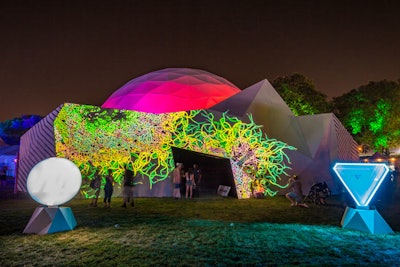
At night, the structure's facade, which was produced by VolvoxLabs, lit up with colorful, projection-mapped ultra-high-definition videos of designs that continuously changed.
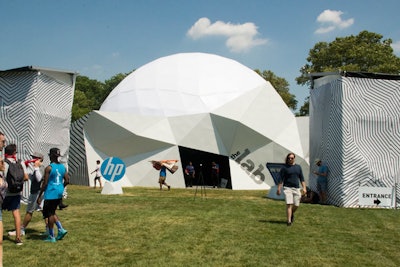
The Lab, which was presented by the Verge and Hewlett-Packard, was the focal point of the festival. Designed and curated by Meta.is, the structure housed seven interactive digital art exhibits.
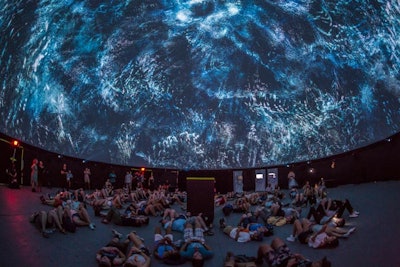
Inside the 70-foot dome was a 360-degree virtual reality theater that held as many as 400 people. The experience was visually produced by Invisible Light Network and Dirt Empire, and Antfood provided sound effects.
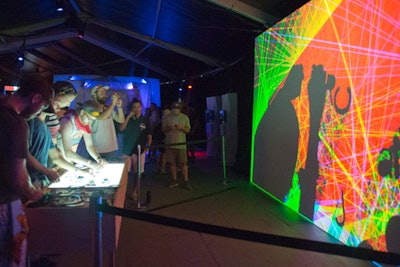
Brooklyn-based artist Zach Lieberman's Reflection Study exhibit allowed guests to create different formations projected onto a wall by moving shapes made out of plexiglass over a light box.
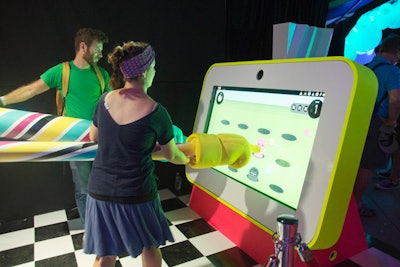
Giant Gestures, an exhibit from Brooklyn art duo Mountain Gods, offered festivalgoers a chance to play around with an oversize touch screen tablet by using giant foam hand props. The installation was meant to reinterpret how humans interact with technology.
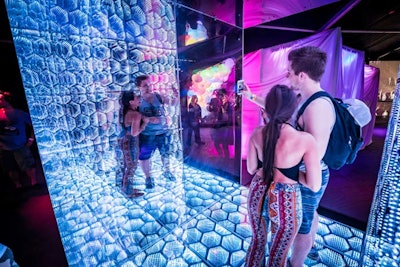
A popular exhibit inside the Lab was the Infinite Wall created by Brooklyn-based artist Gabriel Pulecio. The interactive tunnel—created with mirrors, sounds, and lights—used motion sensors that responded to the guests who stepped inside.

Attendees could physically interact with Hyper Thread, a silk tent that featured seven silk hammocks. Created by Dave Rife and Gabe Liberti, the exhibit enabled festivalgoers to make new sounds by moving around in the hammocks.
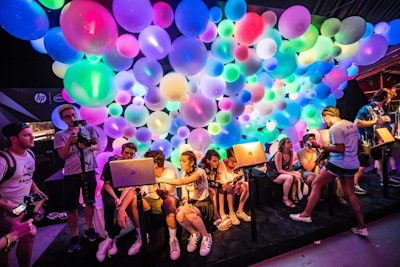
Sponsor HP showcased an attendee-powered color wall inside the Lab. Using the brand's technology, the wall would change colors in time for a selfie taken with a laptop. The activation was produced by Infinity Marketing Team.
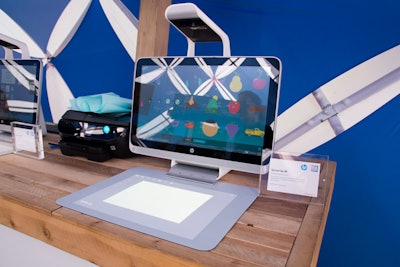
HP also showed off its technology in a separate lounge. The activation gave guests the chance to create custom temporary tattoos using Sprout by HP technology.
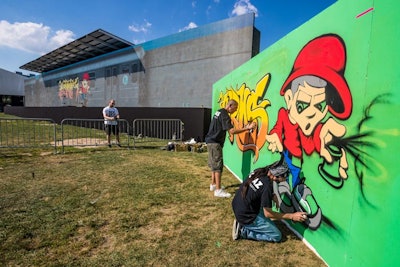
A collaboration between 5Pointz Aerosol Art Center, Mevent, and AST Studios, the subway-train projection paid homage to graffiti art's New York origins. Artists spray-painted graffiti on a green screen, which was translated onto the high-definition video wall.
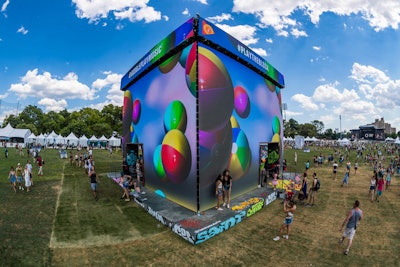
The visually striking, LED-powered multimedia block featured changing videos of animated designs, music videos, and performances, based on fan interaction and festival sets. The structure featured Google Play's social media handle and hashtag.
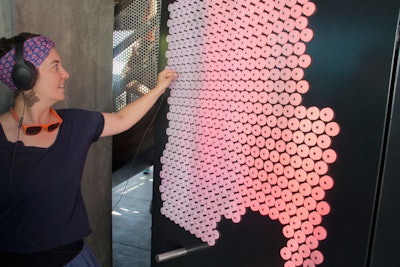
The interior of the block featured a headphone jack wall. Attendees could plug headphones into the various jacks to listen to different songs from Google Play Music playlists, including one curated for the festival. If listeners hit a "winning" jack, they were taken up to the second-story roof to enjoy the festival view.
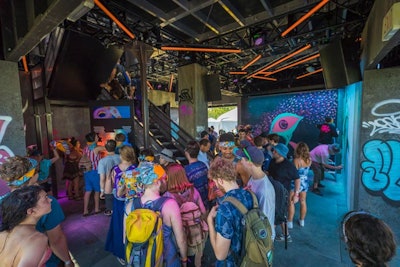
The block also featured live graffiti demonstrations.
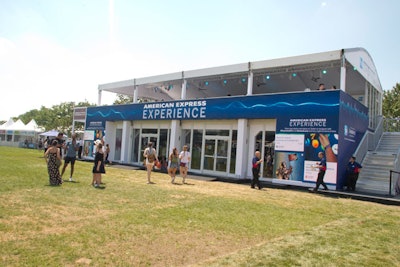
American Express' two-story tent, built and designed by Momentum Worldwide, offered a mix of low-tech and high-tech experiences, including a 360-degree panoramic digital photo booth. The roof deck was open to card members and offered a view of the main stage, DJ sets, and custom cocktails.
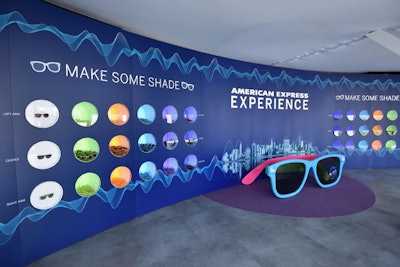
A popular low-tech experience for festivalgoers was a customizable sunglasses station, located on the first and second floors.
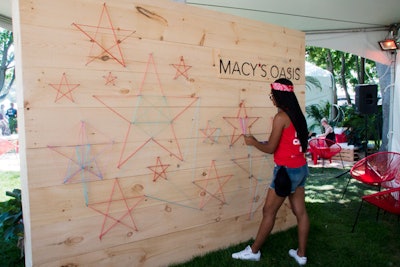
Macy's partnered with LeadDog Marketing Group to produce the Macy's Oasis, which gave festivalgoers a chance to relax with lounge furniture and a charging station. Along with bandanas soaked in ice water, the lounge had a string art wall created by attendees.
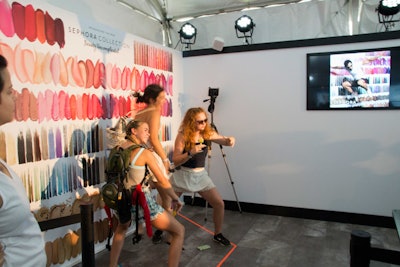
The official beauty sponsor of the festival, Sephora partnered with Revolution Marketing to host a tent that gave festivalgoers a chance to test out a variety of products, including face masks and lip balms. Along with a beauty bar, braid bar, and dry shampoo styling station, the tent had a photo booth with makeup props and a makeup palette backdrop.

Antioxidant infusion beverage brand Bai partnered with Relevant to produce the the lounge, which offered drinks and cocktails, a phone-charging station, and a photo station featuring a LightBright wall created with Bai bottles. Bai also had a custom Snapchat geofilter for the festival.
